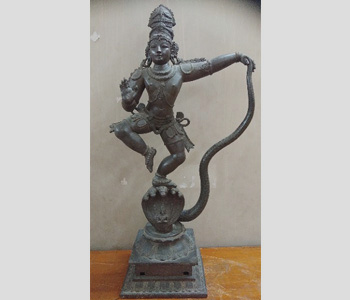Madurai

This district museum situated with in the premises of the Gandhi Memorial museum complex. This museum was established during the 5th World Tamil conference held at Madurai in 1981. It was setup on the Government's principle of providing museums to all the districts and in that order it came as the second district museum after Salem. Now the museum functions as a research and information centre in addition to being an institute of educative entertainments.
The bronzes housed in the Museum are Somaskandar from Andhra,Nataraja from Tanjore Vishnu and Devi from Madurai Kaliyakrishna from Dindigul ,Pancha muga Vinayagar and Devi from Madurai.
Since Madurai had been under the reign of all the rulers who ruled over Tamil nadu, it has the traces of such rulers in the form of inscriptions and artefacts and as it is situated at the banks of river Vaigai it had been supported for its all the social and cultural activities of life. These natural, historical and pre historical background forms a very rich source for the museum collection.
The prime attraction of this museum is its sculptures. All sculptures are in display at the entrance of the museum. Hero stones and Inscriptions are also displayed .To illustrate the prehistoric life of this region a showcase containing stone tools of Palaeolithic and Neolithic assortments, potteries and potsherds are in the gallery besides a burial urn. The Pandia inscription and palm leaf manuscripts in display tell the way through which the ancient Tamil passed to reach the style it has today.
The Zoological gallery comprises a number of preserved Polar Bear ,Sloth Bear ,insects, scorpion, starfishes, fishes, snakes, turtles, birds and mammals.
The Ethnology case explains the material life of the Paliyars of Kodaikanal hill. There are showcases for musical instruments, woodcarvings, and coins of India over different period. Treasure trove objects, Arms and Paintings of Tanjore tradition are also on display in the museum.
Popular lectures, different types of competitions for school and college students, research assistances for students and aspirants and special training programme for professionals and interested public are some of the museum's educational activities.
Contact Details :
The Curator,
Government Museum,
Gandhi Memorial Museum campus,
Madurai - 625 020.
musemdu123@gmail.com
FEW IMPORTANT EXHIBITS :
© 2026 All Rights Reserved . Government Museum
Designed & Developed by Webtrendz Technologies India Pvt Ltd







